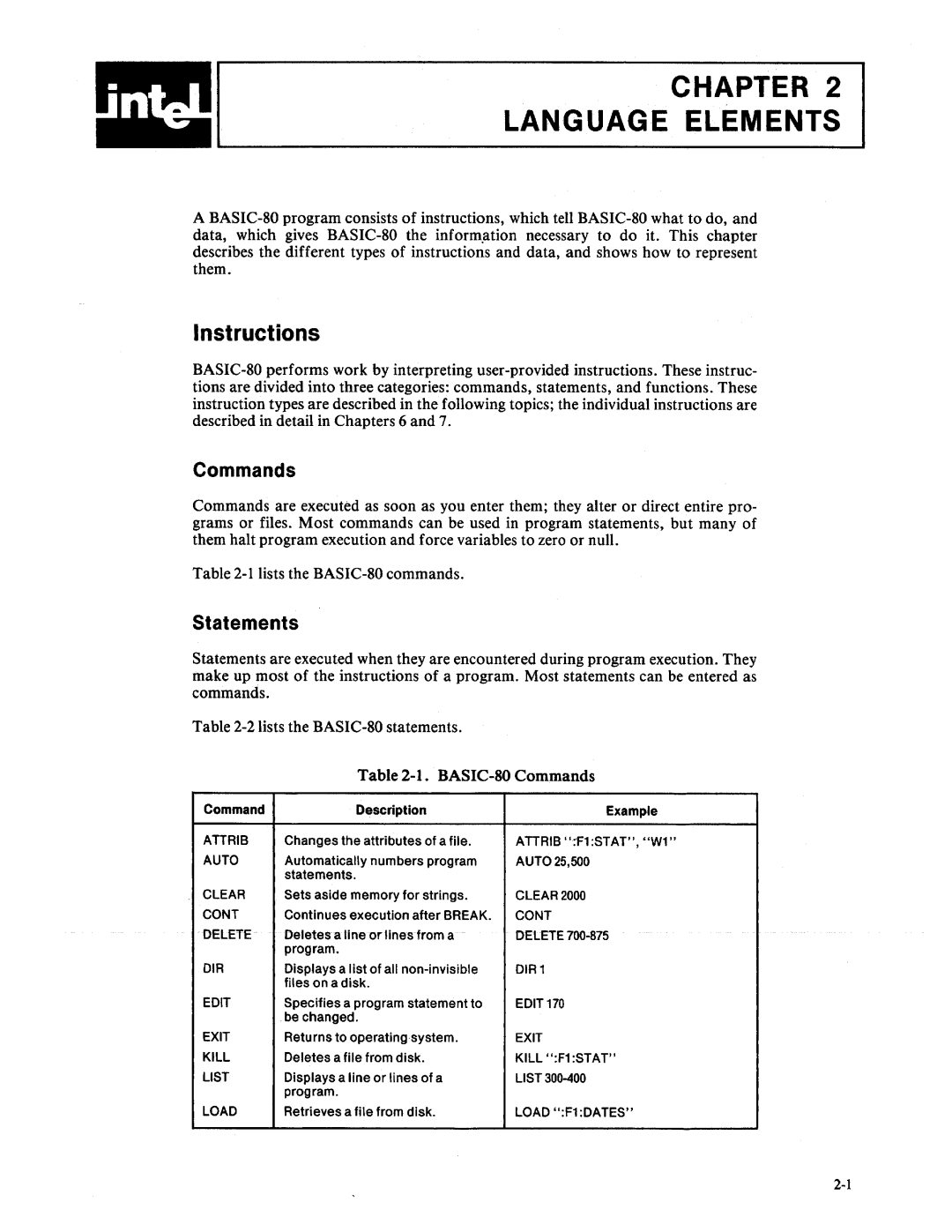
CHAPTER 2
LANGUAGE ELEMENTS
A
Instructions
Commands
Commands are executed as soon as you enter them; they alter or direct entire pro- grams or files. Most commands can be used in program statements, but many of them halt program execution and force variables to zero or null.
Table
Statements
Statements are executed when they are encountered during program execution. They make up most of the instructions of a program. Most statements can be entered as commands.
Table
Table
Command | Description | Example |
|
|
|
ATTRIB | Changes the attributes of a file. | ATTRIB "~F1 :STAT", "W1" |
AUTO | Automatically numbers program | AUTO 25,500 |
| statements. |
|
CLEAR | Sets aside memory for strings. | CLEAR 2000 |
CONT | Continues execution after BREAK. | CONT |
DELETE | Deletes a line or lines from a | DELETE 700~875 |
| program. |
|
DIR | Displays a list of all | DIR1 |
| files on a disk. |
|
EDIT | Specifies a program statement to | EDIT 170 |
| be changed. |
|
EXIT | Retu rns to operating system . | EXIT |
KILL | Deletes a file from disk. | KILL ":F1 :STAT" |
LIST | Displays a line or lines of a | LIST |
| program. |
|
LOAD | Retrieves a file from disk. | LOAD ":F1 :DATES" |
|
|
|
